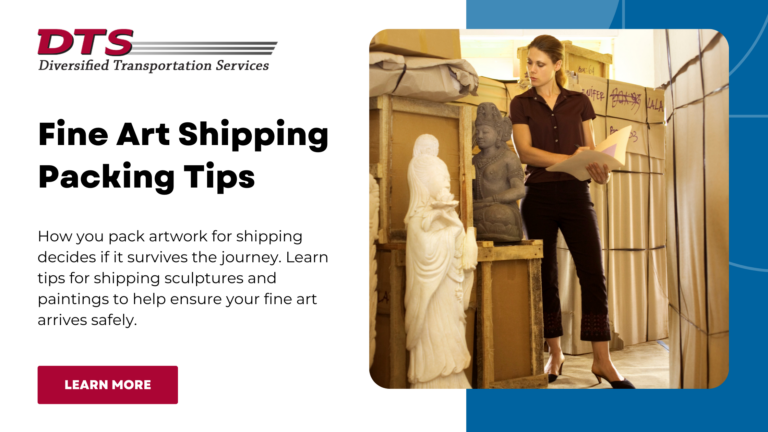
Shipping sculptures, paintings, and other types of fine art to customers, museums, galleries, or any other recipient carries considerable responsibility. You want to ensure that the artwork arrives not just in one piece but in the expected condition.
That’s why proper packaging is so important in fine art shipping. However, safe, effective packaging techniques can vary for different types of art.
To help make the process easier, let’s explore how to package different types of fine art.
The right tools and supplies are key for packing safely. The essentials may differ from type to type, but in general you’ll need:
Having these supplies at hand when packing fine art for shipping will help with everything from checking package weights to securing multiple boxes on a palette.
Here are some key supplies for shipping sculptures:
Shipping fine art sculptures can be intimidating — especially when you’re dealing with a delicate or intricate piece. But you can follow these steps to make it easier:
Here are some essential supplies for shipping paintings:
Start by checking you have the correct size box for the painting. There should be at least a few inches of space on each side of the piece.
If the painting is framed or a stretched canvas:
If the painting isn’t framed or stretched, you can ship it rolled up in a shipping tube. Just make sure the tube is a few inches longer than the canvas. Check that the tube’s diameter is big enough to allow for padding material and acid-free paper.
Here are a few more things to keep in mind for fine art packing and shipping:
Preparing for fine art shipping can be complicated and time-consuming, but ensuring the artwork’s safety and the recipient’s satisfaction is crucial.
Once your art is appropriately packaged and ready to go, choose a fine art shipping company to arrange the shipping to the destination.
DTS is a shipping logistics company with over 30 years of experience, offering domestic and international services. On our blog, we’ve covered all things fine art shipping, including the details of shipping art internationally and fine art import fees.
Get in touch today to find out how we can help you with fine art shipping.
*The information provided in the blog post titled "Fine Art Shipping Packing Tips: How to Pack Sculptures and More" is intended for general guidance and informational purposes only. Any reliance you place on such information is therefore strictly at your own risk. DTS will not be liable for any losses, injuries, or damages arising from the use of the information provided in the blog post.
Whether you're a company looking to improve one facet of your supply chain, your entire supply chain, or simply looking for a transportation and logistics consultation, we can help.